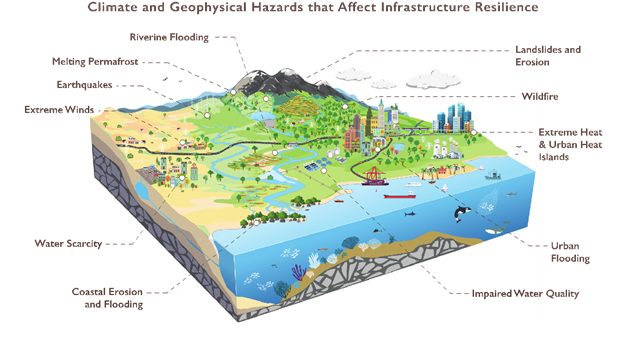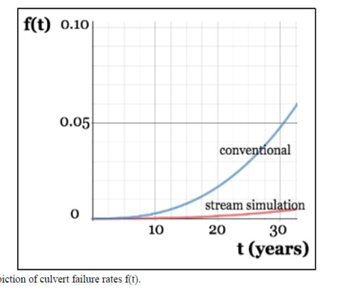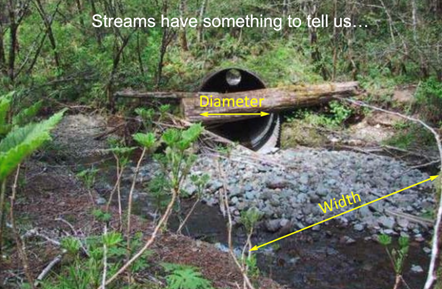Nature Has the Solution
What are Nature-based Infrastructure Solutions?
Nature-based Infrastructure solutions are actions or activities that are employed to:
- increase the resilience of infrastructure,
- protect, enhance, or restore the environment and
- provide for social well-being.
Why do we even need to think about including NbIS in development projects?
Due to rapid climate change, the intensity and frequency of extreme storms, floods, droughts, heat waves, landslides, erosion, and wildfire events are increasing. The impacts are widespread, affecting all places, people, and sectors. Many cities and communities are located adjacent to rivers or in coastal areas directly exposing infrastructure to storm surges, flooding, sea level rise, erosion, and wind hazards.[1]
Functioning ecosystems provide services that protect us from this rapidly changing world. Yet, many of our government policies and economic goals result in the continued degradation of these systems.
|
“The health of ecosystems on which we and all other species depend is deteriorating more rapidly than ever. We are eroding the very foundations of our economies, livelihoods, food security, health, and quality of life worldwide.” Sir Robert Watson, Chair, International Panel on, Biodiversity and Ecosystem Services |
- 70% of infrastructure disruption and loss is climate related.
- Climate change continues to increase storm frequency and intensity.
- Two-thirds of humanity is expected to live in urban areas by 2050.
- 60% of the infrastructure to support them has not yet been built.
- Human impacts on the function of natural systems have been extensive.
- 75% of the earth has been impacted by human activity.
- One fifth of wetlands have been lost globally, mostly in developed countries.
- Habitat changes have resulted in loss of biodiversity.
- Over a million species are threatened with extinction.
- Biodiversity is our safety net.
- For our security! It’s time to rethink infrastructure development.
We spend a lot of money on infrastructure.
- 88% of all global climate change adaptation costs,
- water supply, treatment, and flood protection systems 54% of that[1]
- Do it right!
- Promote practices that concurrently protect infrastructure, adapt to climate change, promote environmental integrity and biodiversity, and provide for social well-being. In other words, incorporate NbIS into every development project!
 Figure 1: Climate-related hazards resulting from extremes in precipitation, wind velocities, and temperatures account for more than 91% of all internationally reported disasters (United Nations 2015b). Impacts include floods, droughts, heatwaves, wildfire, and wind damage. Geophysical disasters (earthquakes, mass movement, and volcanoes) are responsible for the remaining 9%. Floods are responsible for most natural disasters at 43% with storms and associated extreme winds the second-most impactful disaster at 28% of reported disasters.
Figure 1: Climate-related hazards resulting from extremes in precipitation, wind velocities, and temperatures account for more than 91% of all internationally reported disasters (United Nations 2015b). Impacts include floods, droughts, heatwaves, wildfire, and wind damage. Geophysical disasters (earthquakes, mass movement, and volcanoes) are responsible for the remaining 9%. Floods are responsible for most natural disasters at 43% with storms and associated extreme winds the second-most impactful disaster at 28% of reported disasters.
How can NbIS help make infrastructure more resilient?
NbIS can COMPLEMENT man-made “grey” infrastructure such as:
- green roofs and vertical gardens on buildings to reduce heat and cooling costs for residents and improve aesthetics and livability.
- Permeable pavement and rain gardens that capture runoff from buildings and streets reduce costs and the pollution associated with the combined sewer and stormwater systems.
- Urban parks, forests, and street trees,
- cool city streets,
- capture carbon,
- decrease pollutants, and
- improve the overall health of urban residents.
NbIS can SUBSTITUTE for grey infrastructure by:
- using deep-rooted vegetation and bioengineered structures to stabilize hillslopes protecting roads, rail systems, and buildings.
- Protecting or planting forests and maintaining open floodplains along stream systems
- versus removing vegetation and constructing gabions, levees, or concrete barriers
- which fail over time providing a false sense of security,
- which alter water, debris, and sediment flows – increasing risks of erosion and flooding downstream.
- versus removing vegetation and constructing gabions, levees, or concrete barriers
NbIS can SAFEGUARD many types of infrastructure.
- Protecting or restoring wetland systems including beaver populations in the uplands can reduce flooding downstream protecting cities and towns from loss of life and property.
- Improving soils and Increasing infiltration in the uplands by using no-till and regenerative agricultural techniques and restoring functional forest and range ecosystems can increase carbon uptake and help hold water on the landscape to reduce on-site and downstream flooding.
- Protecting or restoring mangrove forests, marshes, coral reefs, and dune systems protects coastal infrastructure from storm surge and coastal flooding and erosion.

Source: Race to Resilience https://climatechampions.unfccc.int/a-threat-and-a-solution-tourisms-role-in-mangrove-protection/
Doesn’t it cost more?
- Traditional methods of costing projects are not appropriate.
- Consider the whole life-cycle costs.
- Monetize ecosystem service values.
|
Case Study 1: Green Roofs BENEFITS:
Sources:
|
|
Case Study 2: Road Stream Crossings Roads are vital to dependable transportation, delivery of goods, access to health and community services yet road failures continue to rise with both human and economic consequences. Current: >21 million km of roads. Many need to be upgraded. Many bridges and culverts are degrading. Future: 3.0– 4.7 million additional kilometers will be built by 2050. LET’S DO IT RIGHT. PRINCIPLES:
Source: Mark Weinhold, Hydraulic Engineer, USDA Forest Service Wisconsin Department of Transportation |
Who will pay?
- Activate the Loss and Damage Finance fund - Supported by nearly 200 nations at COP27
- Low and middle-income countries have the most need for support
- Vulnerable infrastructure
- Highly impacted by recurring storms
- Low GDP
- Engage public/private partnerships - Investing in nature makes business sense!
- Many Conservation Finance Programs exist
- Payment for Ecosystem Services
- Conservation Easements
- Mitigation Banking
- Water Quality Trading
- REDD+
- Debt for Nature Swaps
- Green Bonds
- Resilience Bonds
How can I get on board?
- Put people and nature first
- Accelerate the pace and scale of NbIS projects
- Join with other restoration or NbIS projects around your regions
- to increase the scale of success
- to distribute investor risks
- Demand hazard assessments as a part of land use planning and project funding
- Interdisciplinary team assessments must be required
- Change Policies
- Add environmental and social factors to a nation’s assessment of economic prosperity
- End subsidies that harm the environment
- Protect the best – Restore the rest
- Engage with the Coalition for Disaster Resilient Infrastructure
References
[1] Thacker, S., Adshead, D., Fantini, C., Palmer, R., Ghosal, R., Adeoti, T., Morgan, G., & Stratton-Short, S (2021) Infrstructure for climate action. UNOPS
By
Karen Bennett, Consultant, United States Forest Service
Coordinating Lead Author for the Nature-based Infrastructure Solutions Chapter of the CDRI Biennial Report Ed. 1
The views and opinions expressed in this blog are those of the author and do not necessarily reflect those of the Coalition for Disaster Resilient Infrastructure (CDRI).








